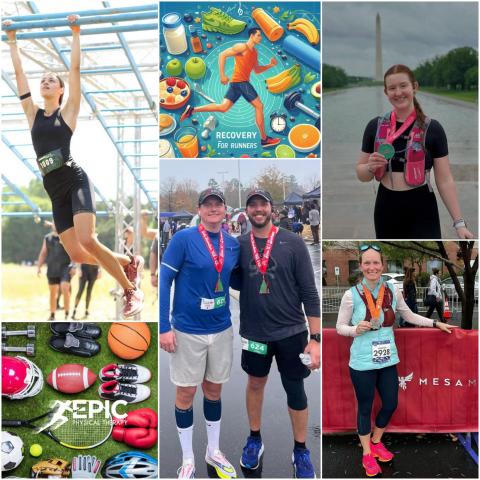For endurance athletes, the delicate balance between pushing boundaries and maintaining a sustainable practice often hinges on one crucial aspect: movement efficiency. In an environment where the line between peak performance and injury can feel razor-thin, embracing physical therapy becomes more than just an afterthought; it transitions into a foundational strategy for long-term success.
Consider the perspective of an athlete like Jennifer Crisson, who has woven physical therapy into her routine for nearly a decade. With eight years elapsed since her ACL injury, her commitment has evolved past mere rehabilitation. It now embodies a continuous effort to maintain movement quality and health, not just for her but for her entire family. This proactive mindset underscores a pivotal realization—physical therapy is a form of preventative medicine. It emphasizes movement not as a reaction to pain or dysfunction but as an essential component of an athlete’s overarching strategy for longevity in sport.
The focus on efficiency in movement can have profound implications. Experts in physical therapy often employ thorough assessments, diving deep into biomechanics to identify subtle inefficiencies that may lead to overuse injuries. These injuries often arise when small compensations add up over time, manifesting as serious disruptions in performance. Addressing these issues early can keep an athlete performing at their best, minimizing the downtime that often follows significant injuries. Each athlete brings unique patterns and habits forged through countless training hours, and understanding one’s biomechanics can make the difference between consistent performance and frustrating setbacks.
Individualized intervention plans emerge from this assessment, crafted to tailor a course of action that meets specific needs. These plans do not only aim to alleviate pain; they seek to build deficiencies into strengths. They center on developing stability and endurance in key muscle groups like the core, hips, and legs—vital areas for any endurance athlete. The reality is that our bodies often become fatigued not just from the miles logged but from the wear and tear of improper movement patterns over time. Therefore, education about these patterns becomes essential. It shifts the focus toward mastering not just technique but also the resilience of the body over the long haul.
Reassessing the progress made is a critical step in this journey. By revisiting the original movement assessments, physical therapists offer insights into whether athletes have internalized corrective strategies. This process ensures that the new habits formed are not temporary adjustments but rather embedded changes to an athlete’s DNA. The connection between mind and body plays a critical role here; it’s not merely about physical changes but also about how the brain learns to adapt and reinforce these new movement patterns.
What underscores the efficacy of this approach is the passion and experience that many practitioners bring to their roles. As athletes themselves, they understand the rigorous demands of endurance sports. Their insights are rooted in personal experience, fostering a space where athletes feel understood and supported, not merely treated. This connection alters the perception of physical therapy from a utilitarian service to a community of like-minded individuals dedicated to a common goal: optimizing performance and extending athletic careers.
Additionally, a holistic understanding of recovery and performance is indispensable. Recovery is not solely defined by post-session cooldowns or physiotherapy but intertwines with lifestyle factors that are equally critical. A balanced approach includes education on proper nutrition, sleep hygiene, and stress management. These elements collectively shape an athlete’s ability to perform sustainably. When well-rounded, they create a robust framework that fosters resilience.
Embracing physical therapy within an endurance-focused journey reinforces the idea that maintaining the body is an act as crucial as training for races or logged mileage. Each session, each technique learned, and each correction made contributes to a larger narrative of longevity. It frames the athlete’s journey as not just a series of events but a lifelong pursuit of mastery in movement and performance.
As you prepare for your next long session, let this resonate with your training ethos: movement is not just a series of mechanical actions; it’s an integral part of your identity and endurance journey. Prioritize the quality of every step as much as the distance covered, and remember, it’s in the details of your movement that true resilience is built.
